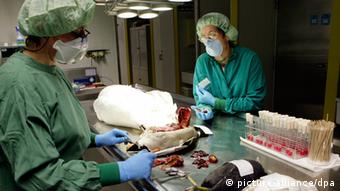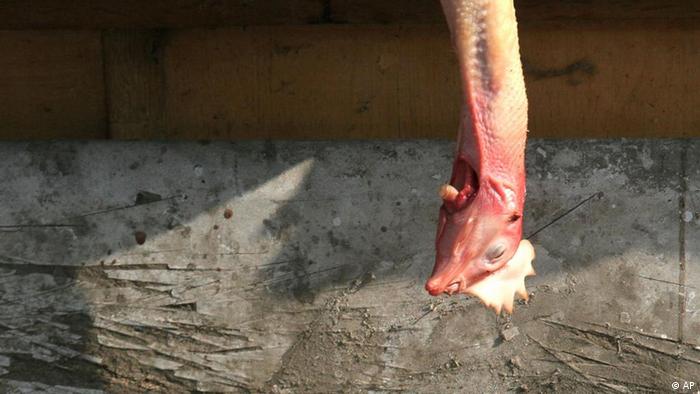Plans Outlined to Prevent Spread of H5N1
Government officials met Tuesday in Phnom Penh to outline a strategy to prevent the spread of bird flu as millions prepare to travel from the provinces—where five cases of the virus have been reported in the past two weeks—to attend the late King Father Norodom Sihanouk’s cremation in Phnom Penh.
The meeting was attended by the Ministry of Agriculture, the Ministry of Health, the World Health Organization (WHO), the Food and Agriculture Organization and the Center for Disease Control (CDC).
“These are poor people coming from provinces. There is some likelihood they will bring their own food and own poultry,” Sonny Krishnan, spokesman for the WHO in Cambodia, said of the estimated 1.5 million people who are expected to arrive for the cremation on February 4.
“We are advising them that if you have to cook chicken, cook it well. We do hope animal health people will do inspections on the movement of poultry,” Mr. Krishnan said.
The WHO on Tuesday confirmed that four people have died in the past two weeks from the H5N1 virus, also called bird flu, and that they all became infected from contact with live poultry. An 8-month-old boy from Phnom Penh’s Pur Senchey district survived infection from the normally lethal virus.
The WHO noted that in all cases, chickens were reported as being sick or dying in the area, and that no entomological link between the five reported cases had been found.
“Although the [H5N1] virus currently does not easily spread among humans, if the virus changes it could easily be spread like seasonal influenza. Hence, early recognition of cases is important,” the WHO said.
Ly Sovann, deputy director of the CDC, said that, along with the Health Ministry, a number of steps are being taken to mitigate the threat of bird flu in the coming days.
Government ministries and partner NGOs will increase surveillance of people and poultry so that cases of bird flu can be identified and treated sooner. Awareness of the disease will be raised through broadcast campaigns on radio and television and the capacity of health workers will be improved through refresher training on how to identify and treat bird flu at district-level hospitals.
Mr. Krishnan said that in Phnom Penh, the Health Ministry along with the Red Cross would distribute brochures to people coming into the city on how to protect themselves from the virus.
Dr. Sin Somuny, director of MediCam, an umbrella organization of health NGOs, said that the Agriculture Ministry’s ability to control the movement of chickens and ducks would be crucial to ensuring that infected chickens are not imported from Vietnam and brought into Phnom Penh during the cremation and ahead of Chinese New Year, which starts February 10.
“The Ministry of Agriculture should put up more measures at checkpoints where chickens can be imported. They need to identify infected chickens before they are brought in and kill people,” he said.
Dr. Philippe Buchy, head of the Pasteur Institute’s virology department in Phnom Penh, said that outbreaks of bird flu are often seen during festivals, when demand for chicken rises sharply.
“High risk of transmission [of the H5N1 virus] comes before Chinese New Year, Khmer New Year and Pchum Ben, when there is a huge demand for chicken,” he said, adding that stockpiling of chicken in Phnom Penh in preparation for the huge crowds coming to the city for the late King Father’s cremation may pose an added risk of transmission.
“There is no bird flu epidemic that occurs because of the season —because it is hot or cold. It happens because of festivities,” he said.
In the past week, thousands of chickens and ducks have been slaughtered and the remains burned by the Ministry of Agriculture in the areas where cases of bird flu have been reported.
In Takeo province’s Prey Kabbas district, where a 17-year-old girl died of bird flu on January 21, 4,743 ducks and chickens have been burned by local authorities, said That Bunly, a district official with the Ministry of Agriculture’s Animal Health Department. http://www.cambodiadaily.com/news/plans-outlined-to-prevent-spread-of-h5n1-8722/

